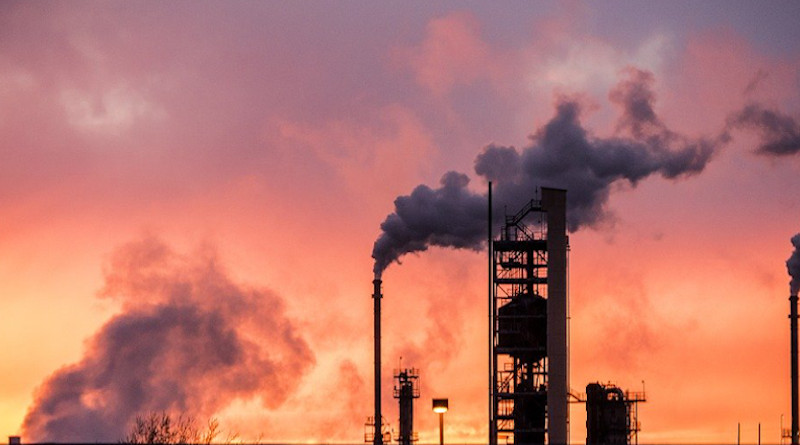Pakistan: What Should Be The Facets Of New Refining Policy? – OpEd
There can’t be two opinions about need for boosting crude oil refining capacity in Pakistan. However, analysts are of the consensus that the issue is complicated, policy makers and players are not on the same page, presence of pressure groups and above all there is an acute shortage of foreign exchange. As a result announcement of new Refining Policy has been lingering on, eroding paltry foreign exchange reserves of the country.
Lately, the government has asked local refineries to overcome the likely shortfall of 8,000 tons of petrol in the country. This clearly indicates that the concerned departments were unaware of the factors responsible for the shortfall: 1) delay in opening of L/Cs due to the limited availability of the foreign exchange and 2) overflowing furnace oil storage tanks of the refineries.
The government has been emphasizing local refineries to further up-grade their plants for producing Euro-V specification fuels and minimizing production of furnace oil, however it requires capital investment of around US$5 billion.
Analysts also say that for up-gradation of refineries that included setting up of Diesel HydroDesulfurization (DHDs) to reduce Sulphur from diesel and isomerization plants for enhancing the production of Motor Spirit (Petrol).
This would require refineries to arrange funding from either their own resources and or borrowing from lenders at commercial terms. To obtain the required funding, refineries will have to improve their balance sheet, according to sources.
At present 8 refineries are operating in the country which have not been able to perform well. These refineries have not been able to utilize full capacity mainly due to low margins, liquidity issues, low fuel grade, low domestic crude oil production and high cost of production.
The aggregate installed capacity of the refining sector is around 22 million tons per year. In 2021 these refineries refined around 12 million tons, which puts capacity utilization around t 55%.
Mainly these refineries produce Motor Sprit, Kerosene, HSD and Furnace oil. They also produce HOBC, LDO, Aviation Fuels, Naphtha, Refinery Gas, LPG, Lube-Oil, Asphaly, Wax, Sulphur and various other non-energy products.
Furnace oil is being produced in large quantities. However, due to it being a high cost source for power generation its consumption has gone down drastically which has piled up its inventories as exporting furnace oil has been a challenge for the refineries.
Sector experts suggest that the upcoming refining policy must incentivize existing players to upgrade their facilities to allow them to produce international quality standard products in turn opening up avenues for exports. This will also reduce furnace oil production which will increase profitability of the whole sector due to high margins of MS and HSD.
It seems that policy planers are keen in the creation of new refinery that will require approximately US$15 billion. However, sponsors demand more incentives that would put the existing refineries at a disadvantage.
Refineries are regulated by Oil & Gas Regulatory Authority (OGRA) under Pakistan Oil (Refining, Blending, Transportation, Storage and Marketing) Rules, 2016. Setting up an oil refinery is a highly capital-intensive Project. Going for a secondhand refinery is a not advisable as a refinery comprises of extensive net of pipelines and once refinery shuts down than for long (other than a planned yearly shut down) most of the pipelines are required to be replaced.
The Country can learn from the experience of Cynergico (BYCO) in this regard. The unit even after 8 years of its implementation is the least efficient among all refineries in Pakistan.
The way forward is that the GoP should come up a short term policy that will cover debottlenecking of processes and Balancing, Modernization & Reconstruction (BMR) of existing refineries to make them more efficient in terms of capacity utilization.
The product composition of Refineries should be such that the Country will be importing cheaper products (like crude oil and furnace oil) and producing more of expensive products (like Motor spirit and high speed diesel.
Long term plan comprises of construction of at least one Refinery in next five years with a minimum refining capacity of 50,000 barrel/day extendable to 100,000 barrel/per day in 10 years.
The field of energy and petroleum is highly specialized, and its policy makers should also be properly educated, knowledgeable and experienced to judge the implications of any Policy Review.
The problem is that Ministry of Energy & Petroleum comprises of decision makers who cannot grasp the whole implications because they are more trained in management than the business.
This weakness pushes them to call for advice from consultants on every implication which may spread into various sub implications. The Opinion of each consultant may vary from each other so much that the decision makers try to just pass the time instead of taking a decision.
The same phenomena are with the cabinets and their heads who understand least of the sector and often failed to defend a decision as they can’t comprehend the implication of a policy review at decision time, nor any body give them confidence over a decision.
The multinationals, international suppliers/ traders and local operators engaged in the country in selling of energy / petroleum do also take the advantage of ignorance of decision makers at Ministry and Cabinet level and try to influence the decisions to their own respective advantage. During the process the country suffers and the custodian of country benefits who have least of required knowledge.

